Conceptual photography is a form of image making focused on illustrating one idea. This idea, or concept, can be anything your imagination can muster. You can also use a wide range of creative techniques to get your idea across to the viewer.
This article provides a concise answers as to what is conceptual photography. We also look at some of the best examples of conceptual photography to fire up your inspiration. By the end, you’ll be ready to make your own stunning conceptual photography images.
Conceptual photography starts with a strong concept. This could be anything from a piece of magic to a political message.
A conceptual photo can show a man in a suit floating in space or a budding flower sprouting from an old Jerry can. It can be realistic or completely other-worldly. These images can even be combinations of real and unreal elements. They can be real or surreal.
Conceptual photographers also have incredible freedom when it comes to styles and techniques. They can use old-fashioned techniques like double exposure or collage. But they can also use modern editing programs with mind-bending results.
Conceptual photography can include many different types of photography. You can use landscapes or portraits. The images can include elements of fine art photography. Product photography techniques can also be used.
You can approach conceptual photography in many ways. But the key to success, just as much as the technical mastery, is the strength of the concept or idea behind the image. Be bold and imaginative when developing ideas. Don’t let a lack of technical ability put you off.
Let’s take a closer look at some conceptual ideas and examples. Studying these examples will give you a stronger grasp of what conceptual photography actually is. And the ideas will, we hope, inspire you to create your own fabulous conceptual images.
Backgrounds can play a leading role when used wisely. Photographers are often too fixated on their main subject and don’t pay enough attention to their surroundings.
But when we’re dealing with conceptual photography, every detail needs to be considered. Very elements needs to fit into your concept.
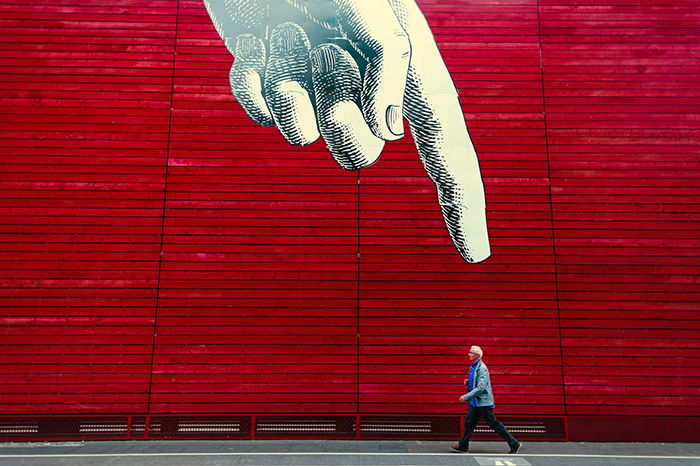
You can use clever street art like this to literally point at your subject.
You can use common backgrounds, such as walls, to make a concept come to life. A wall with graffiti art could make your subject look like it has wings, as in the image below.
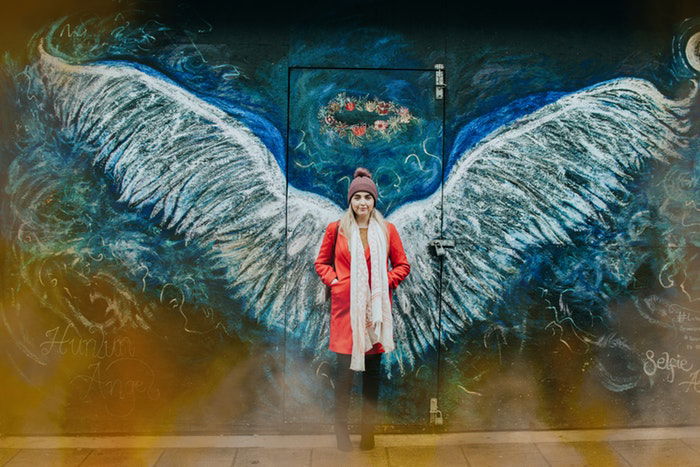
© Lisa Fotios
Look for interesting street art in your area. This challenge will improve your street and conceptual photography skills. It will teach you how to incorporate your surrounding into your image, helping you expand your ideas.
Many of us live in places full of at least some kind of nature. You can go out and take photos in your local park, for example.
As the global climate breaks down, we’re seeing nature at the fore of artist’s work more and more. It’s a great topic for conceptual photography. And you can get creative with different natural items, like flowers, fruits, or trees.
Natural symbolism can send a strong message when the climate is on everyone’s mind.
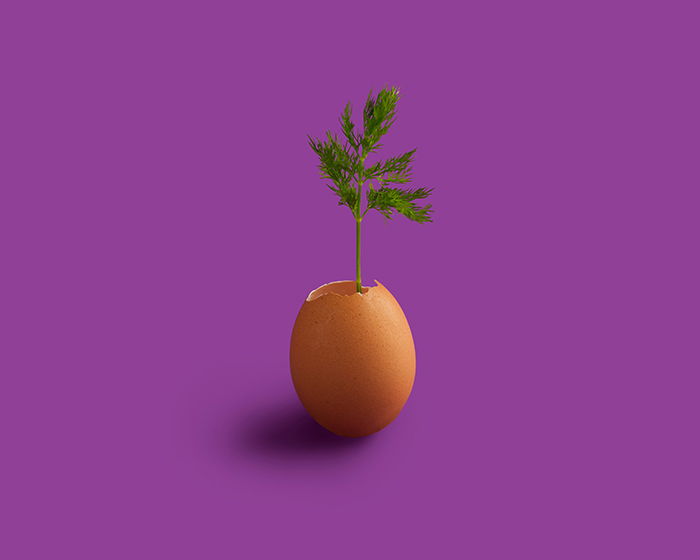
The beautiful thing about still life photos like this one is that they can be interpreted in many different ways.
But what if you had to recreate nature indoors using everyday objects? To take the photo above, the photographer used a simple purple background, an eggshell, and dill. This could symbolise a growing tree, finding strength in empty places, etc.
Experiment with different items in your home to boost your creativity.
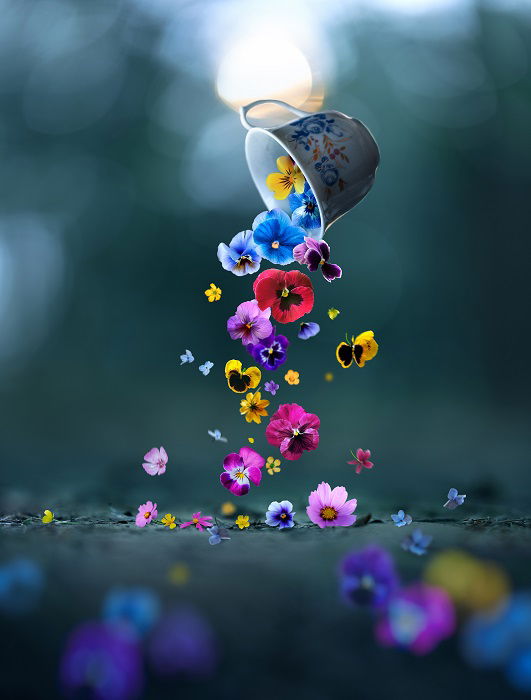
Adding movement to a still life creates narrative and conceptual elements.Photo by Ashraful Arefin
If you can’t find any objects, then you can even use your hands. I love this simple use of green paint. It symbolises that the person is ‘green-fingered’ – they have a natural affinity for gardening.
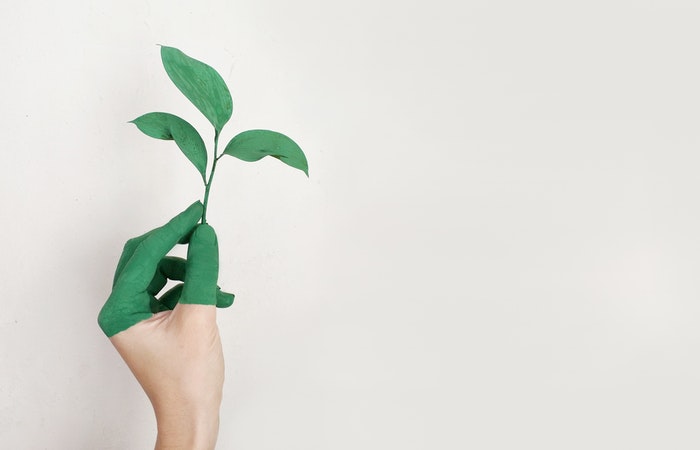
© Alena Koval
Photos taken in water, or underwater, are dramatic and emotional. This makes water the perfect subject for conceptual portraits.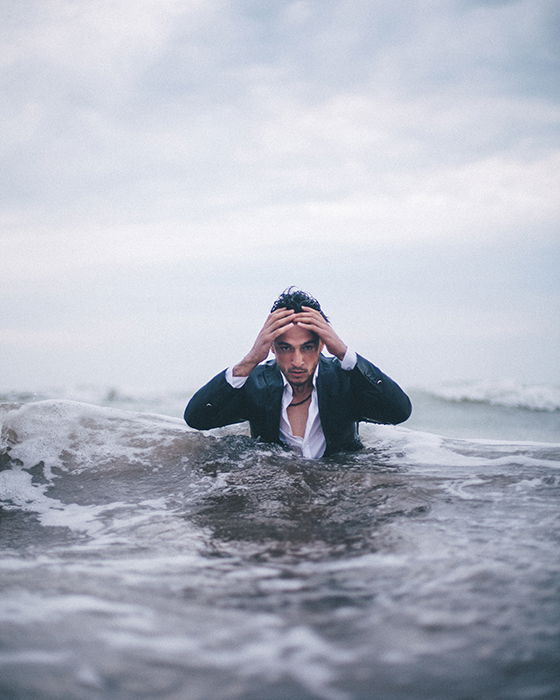 Here are a few of the many things you can do with water:
Here are a few of the many things you can do with water:
If you don’t have any beaches nearby, take photos in a bathtub or use running water. The great thing about a bathtub is that you can add coloring to change the color of the water. Be careful not to stain your model’s skin, though!
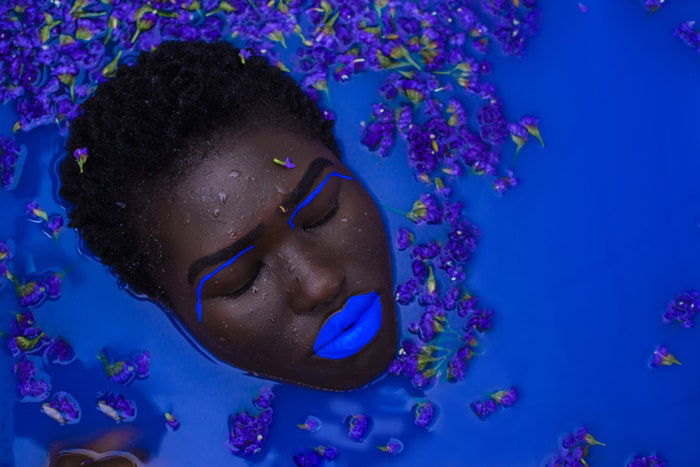
© Dazzle Jam
Many conceptual photographers like to use their dreams as inspiration for their work. Your own childhood dreams can provide you with an abundance of original ideas.
Conceptual photography can involve expert editing skills and extravagant backdrops. The image below has been edited so that the sailboat almost appears to be floating in the sky. This creates a beautiful dream-like scene.
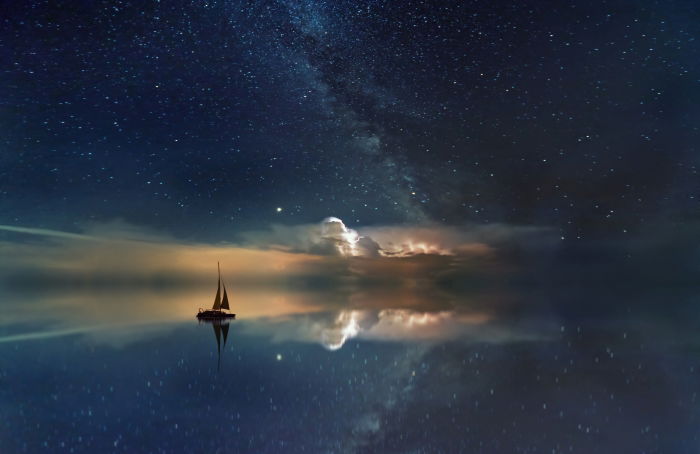
© Johannes Plenio
But you don’t need to use fancy equipment to recreate dreams. But it can also be very simple.
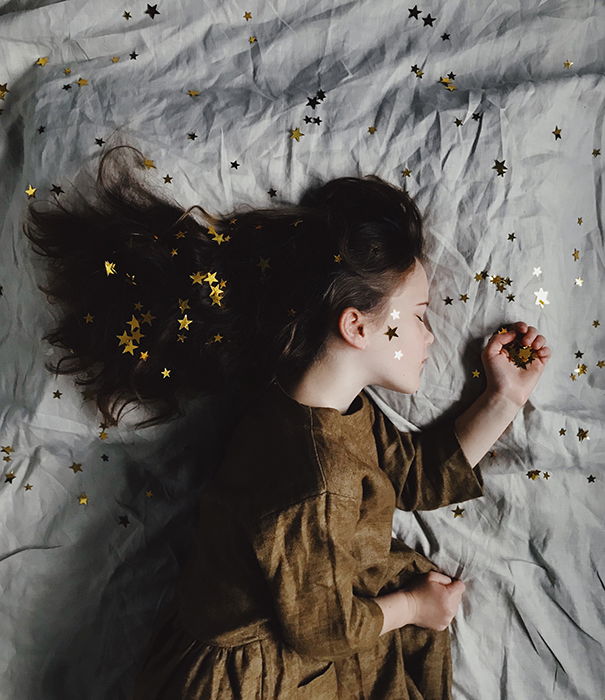 The photo above is the perfect example of a simple yet nostalgic conceptual portrait.
The photo above is the perfect example of a simple yet nostalgic conceptual portrait.
What does time mean to you? Does it feel like a never-ending waterfall, or does it move slowly? After all, time is relative and everyone’s perception of it is different.
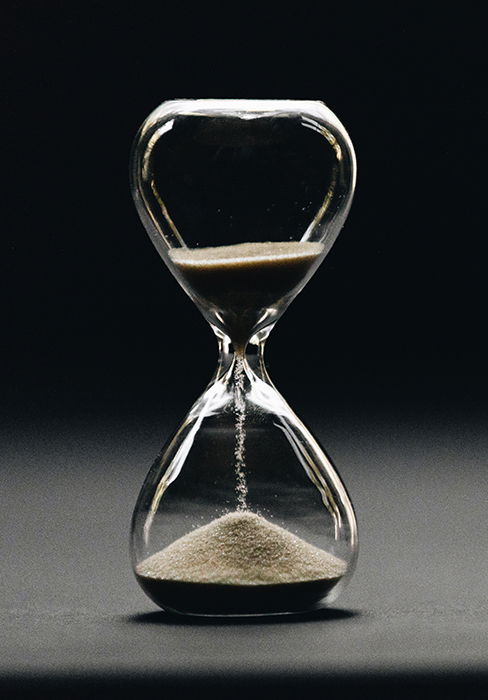
Because time is such an abstract term, it can encourage you to experiment with surreal ideas.
The image below shows the sand falling from between their fingers. This can show time slipping through their hands.
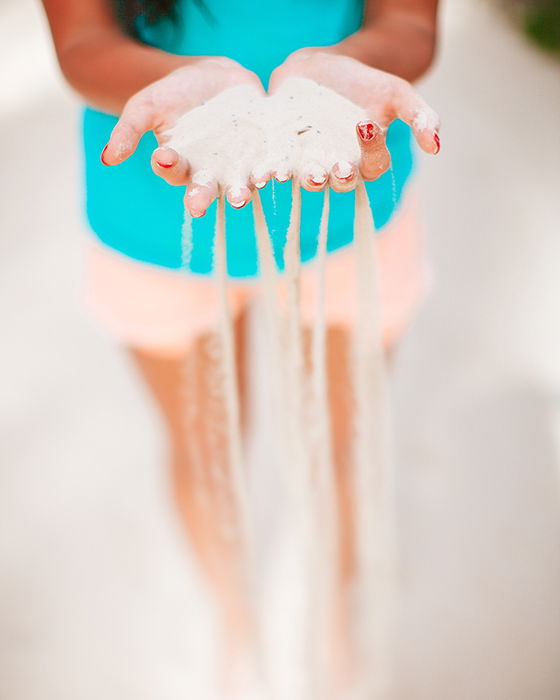
You can also give yourself specific keywords to work with.
You could use how something grows, or how the same person or place looks at different times of the day.
Self-portraits are a fertile ground for experimentation. And there are many ways you can use them in your conceptual photography.
Joel Robison is the master of conceptual photography that incorporates narrative. He is also the protagonist of the stories he tells, adding an element of self-portraiture to his magical artwork.
There are many ways you photograph yourself for this type of photography. You can use a mirror selfie as a starting point. After that, you can mount your camera to give yourself more freedom to pose and interact with the scene.
We were lucky enough to collaborate with Joel Robison on the Fantastic Photo Adventures video course. It’s a must-see for anyone interested in surreal, narrative photography. It’s full of fun and unique conceptual photography ideas.
Reflections are perfect for conceptual portraits. They can be used to symbolise self-esteem, appearance vs personality, and many other important topics.
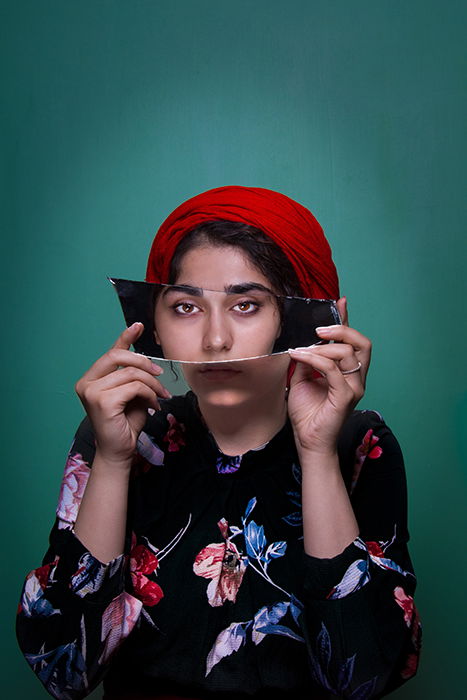
Any kind of reflective material will work for this challenge. You can use a regular mirror or a body of water. Even your phone screen can create surreal, humorous, or thought-provoking conceptual pieces.
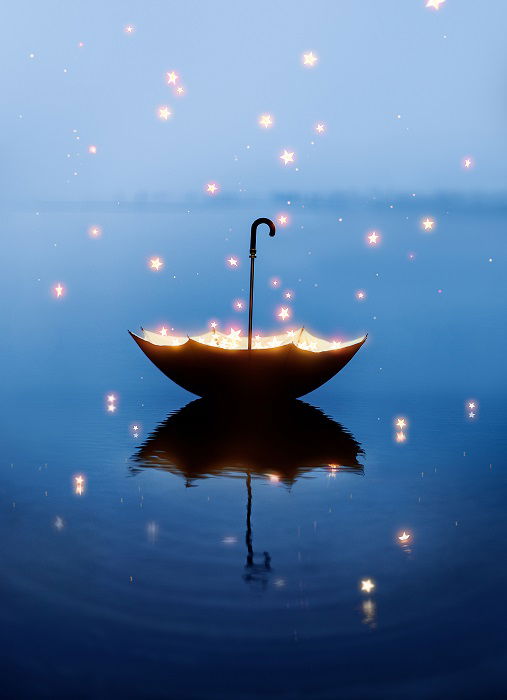
The beautiful thing about reflection photos (like this one from Ashraful Arefin) is that they can be interpreted in many different ways
Some conceptual portraits are mysterious and moody. They often feature people whose faces are hidden by objects or paint-like substances. You can create these in your editing program.
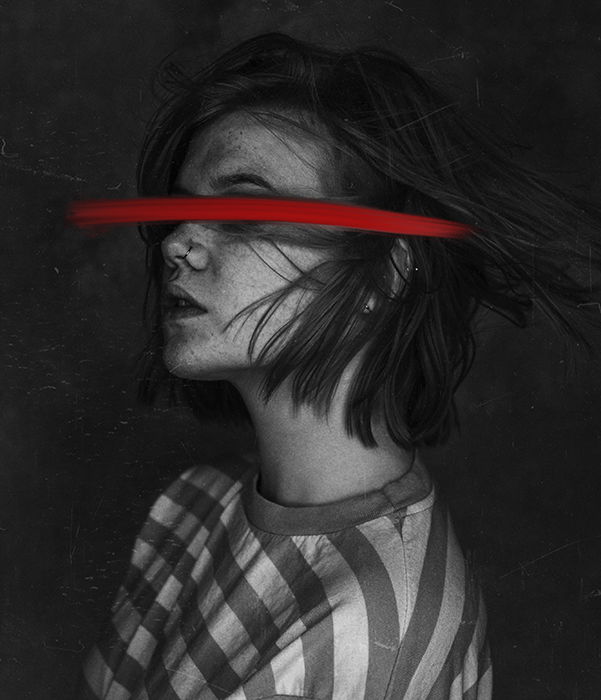
Partly hidden faces can make a concept seem more relatable. Sometimes, anonymity can make it easier for someone to relate to your story.
Use brushes, textures, and other resources. You can download these online for free.
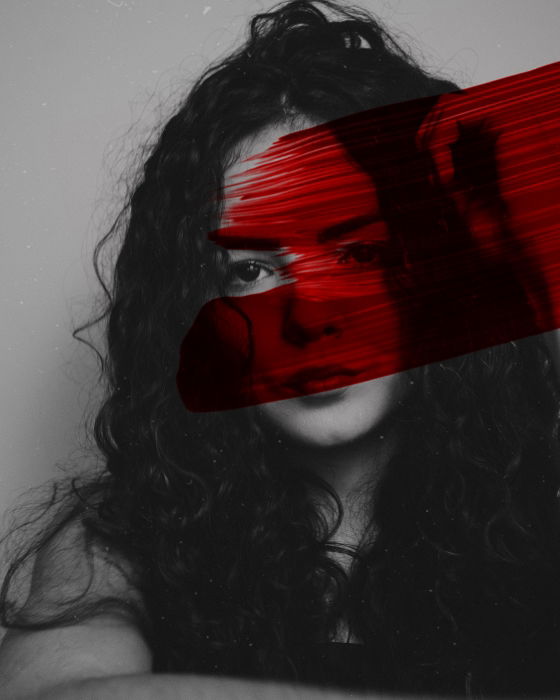
Motion blur is a popular technique. Anyone with a camera can experiment with it. The right kind of blur will make your photos look eerie and confusing.
These are two qualities that many conceptual photographers love using in their work.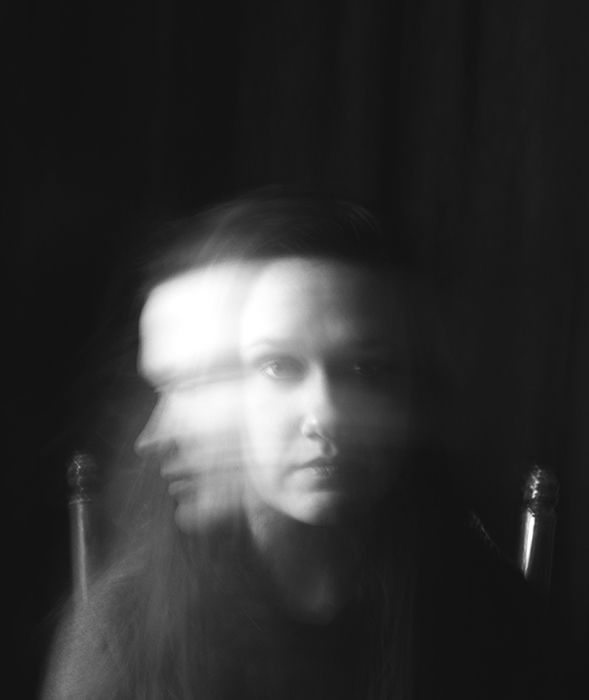 You can move your camera as you press the shutter. Or have your model move around while your camera is on a tripod.
You can move your camera as you press the shutter. Or have your model move around while your camera is on a tripod.
You can also use the panning technique. This involves moving your camera in the direction your subject is moving. It will make everything but your model look blurred.
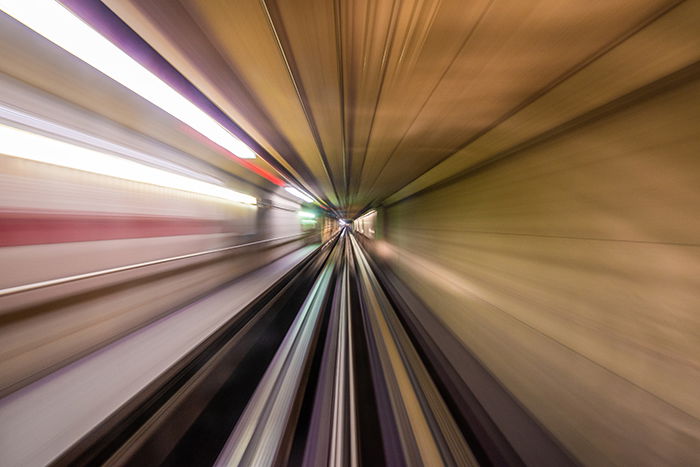
You can combine levitation and conceptual photography to create beautiful fantasy-themed photos.
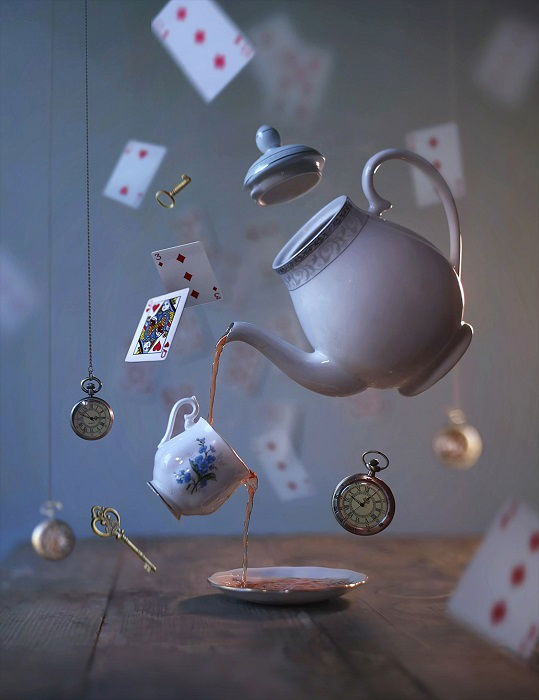
Levitating items can represent the magic of stories, such as the mad hatter’s tea party in Alice in Wonderland! Photo by Ashraful Arefin
Levitating people can symbolise inner peace or a yearning for adventure. Use levitation to emphasise your love for an object. It can be anything from a specific kind of food to your favourite possession.
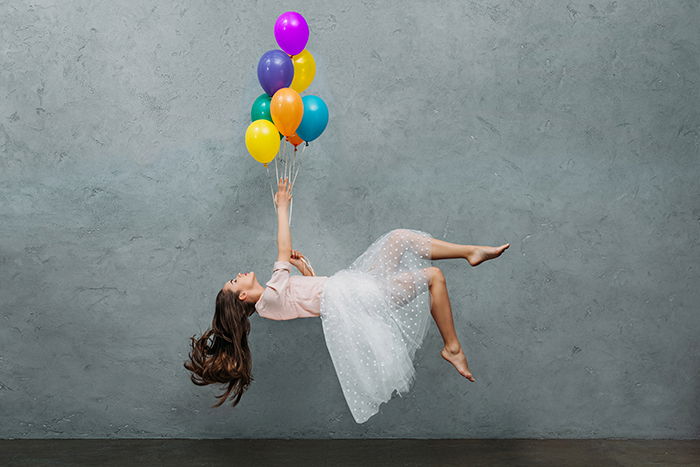
Self-portraiture is a great way to express your feelings without using words. Try to define loneliness using your own experiences with it. Do you associate loneliness with empty rooms or crowded places?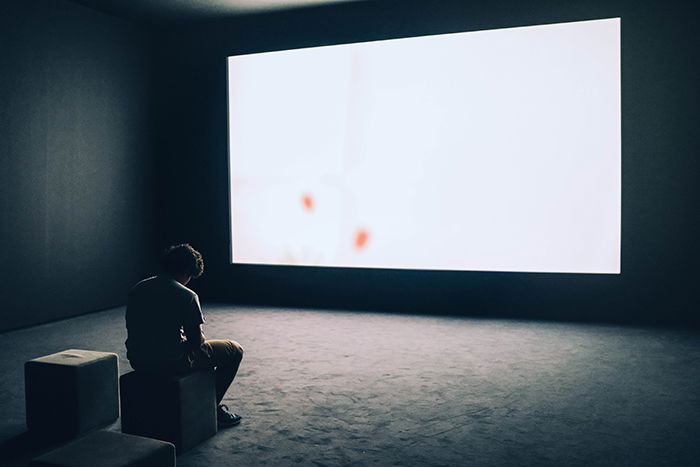 Though loneliness has a negative connotation, it can be a source of joy for some people.
Though loneliness has a negative connotation, it can be a source of joy for some people.
Whatever your answer is, use it as inspiration for your next conceptual photoshoot.
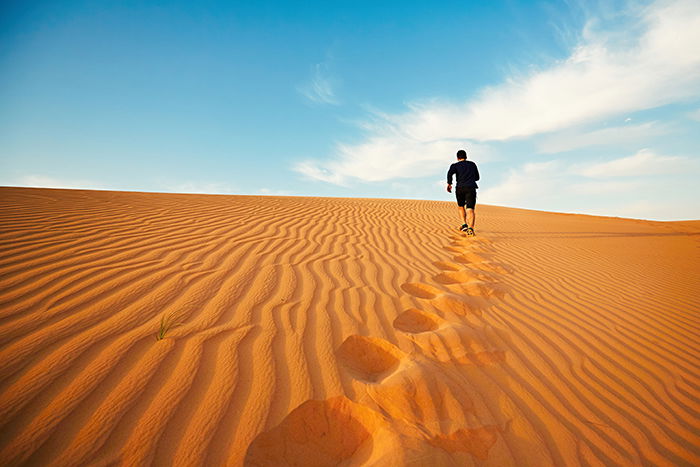
Healing, like loneliness, comes in different forms. It’s a powerful concept because it’s something everyone can relate to.
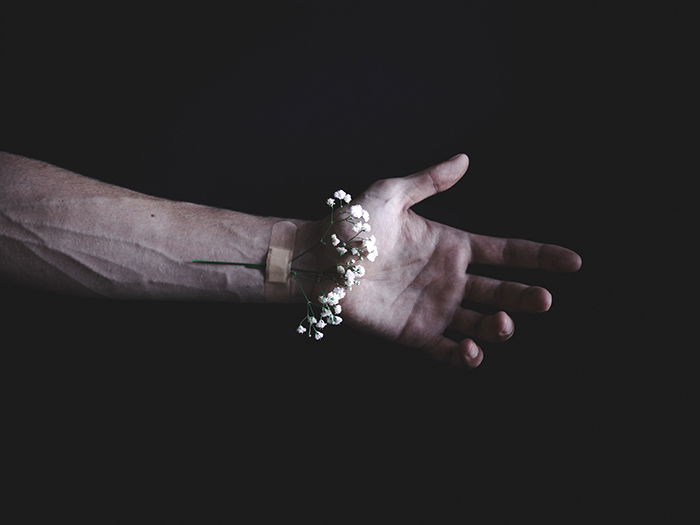
This photo is a great representation of the healing powers of nature. A flower can’t heal a wound, but spending time out in nature can ease emotional pain.
You can use a scratch to symbolise heartbreak. Or a bandage to symbolise the healing process after your heart gets broken. You can photograph the different stages of a healing process.
To put it simply, there’s a lot you can do with this universal experience.
You don’t always have to come up with your own ideas. Sometimes, all you have to do is go out and photograph your surroundings.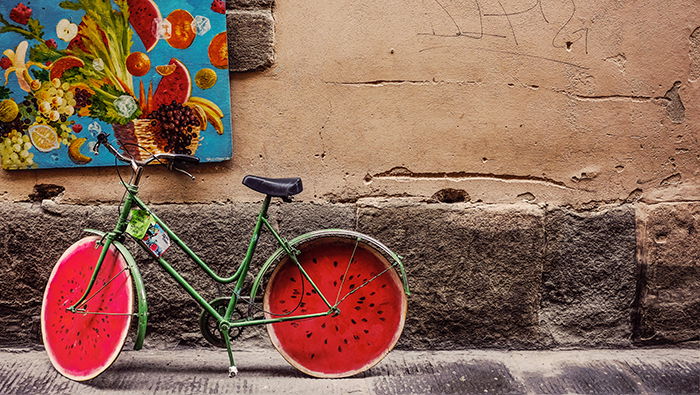 Take the time to explore your area. You might find unusual buildings, landscapes, and vehicles. These could be the stars of your next conceptual piece.
Take the time to explore your area. You might find unusual buildings, landscapes, and vehicles. These could be the stars of your next conceptual piece.

© Jeremy Bishop
We’ve all had to make at least one important decision in our lives. Like healing and loneliness, decision-making is a universal struggle.
Jobs, relationships, and self-care all come with a plethora of obstacles. These could serve as inspiration for your next photoshoot.
A lot of everyday things can represent hard decisions. Think of two roads, arrows, or doors pointing in different directions.
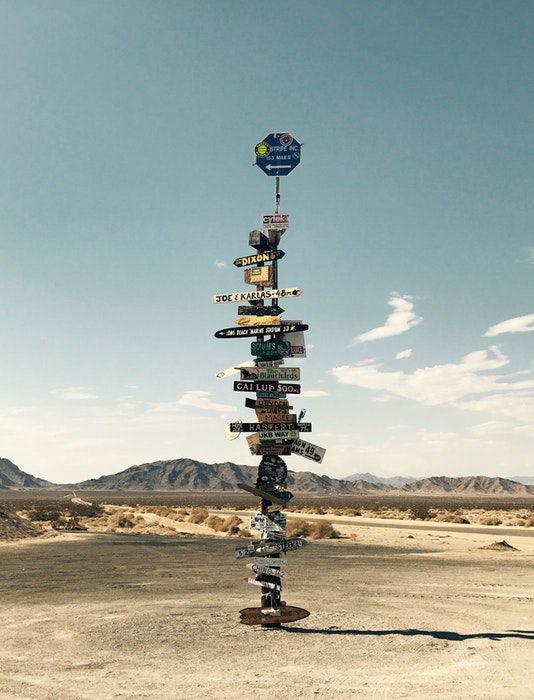
© Mark Neal
Have your model stand in the middle of these things. It will make it seem like they’re trying to make a life-changing decision.
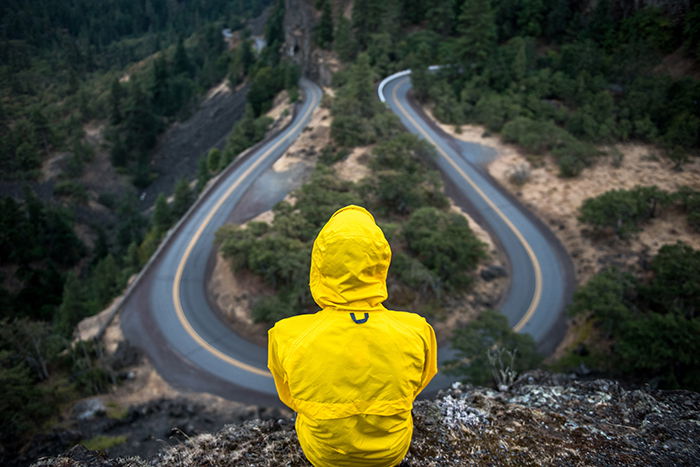
An unusual costume can make a big difference in a conceptual shoot. Astronaut costumes, masks, and bizarre hats can turn a simple portrait into a surreal work of art.
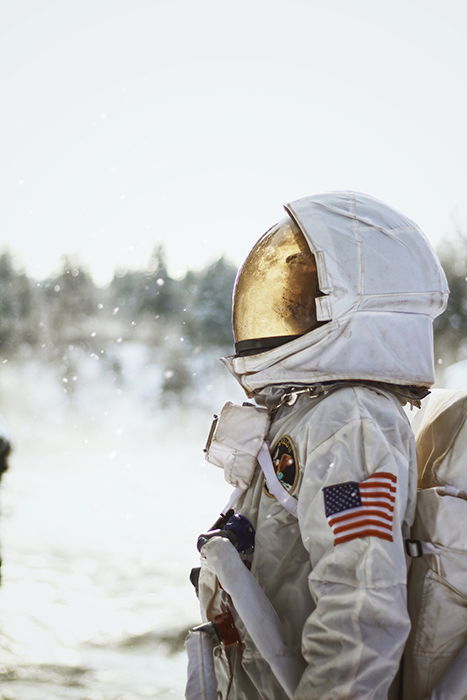
There’s a lot you can do with a simple costume or piece of clothing. Some costumes are relatively cheap and don’t look fake in photographs.
Using these costumes, you might find it easier to emphasise your ideas. You can use an astronaut helmet to represent loneliness, isolation or enjoying one’s own world.
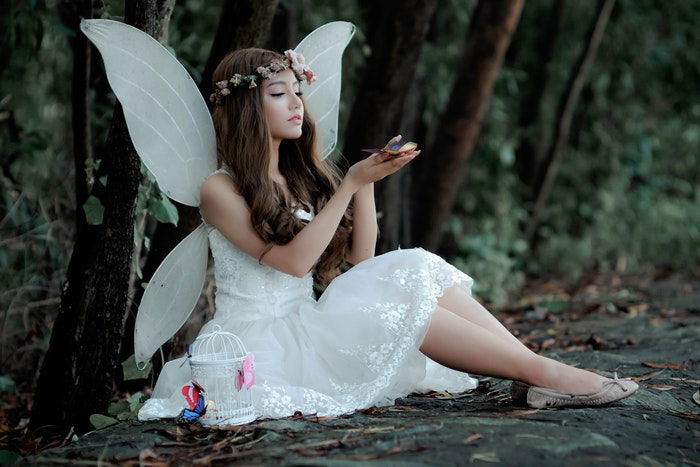
Who says conceptual photography has to be moody all the time? You can enhance your photos of children using clever concepts and adorable outfits.
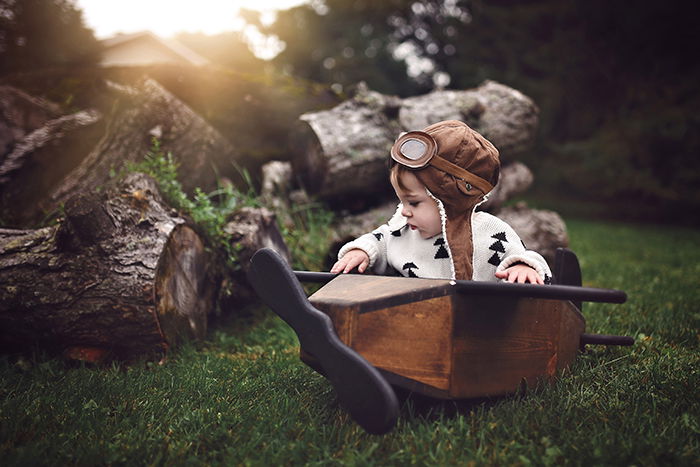
This photo might represent the child’s desire to become a pilot. It could also be a symbol of his love for toy airplanes.
Conceptual photos of children can focus on a child’s dreams, ambitions, or favourite toys.
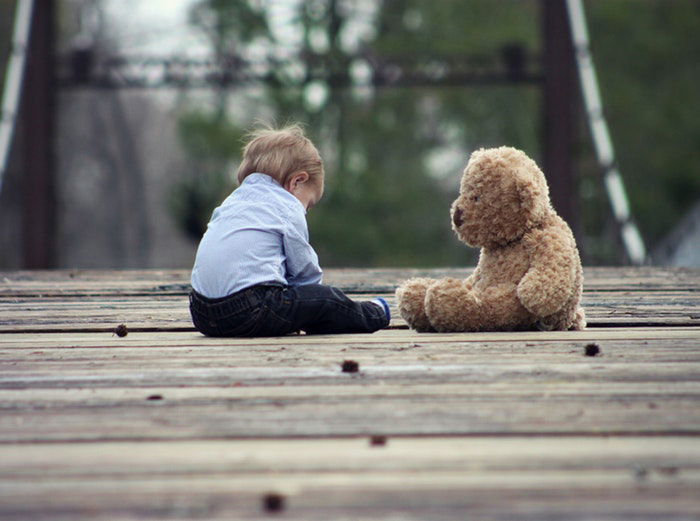
Butterflies are not only visually appealing but perfect for conceptual portraits. They represent freedom and creativity. And they’re also symbols of hope, the human soul, and resurrection.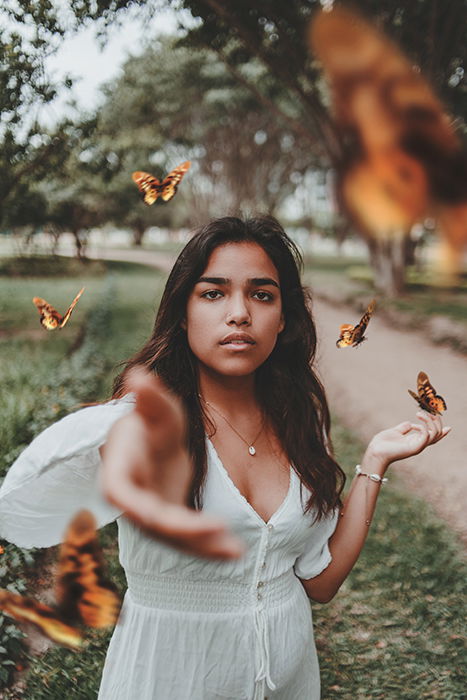 You can use stock photos of butterflies to create surreal and exotic photos like the one above. You can also invest in realistic butterfly accessories. These include rings, necklaces, and hair clips to make your photos stand out even more.
You can use stock photos of butterflies to create surreal and exotic photos like the one above. You can also invest in realistic butterfly accessories. These include rings, necklaces, and hair clips to make your photos stand out even more.
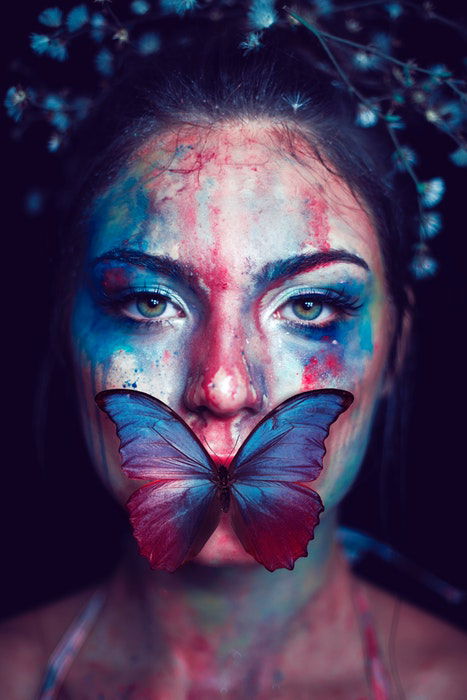
© Isabella Mariana
Conceptual photography is an important part of the photography world. Anyone can use it to get out of their comfort zone, express themselves, and contribute their story to the world.
Take the time to create conceptual photos. You’ll learn how to come up with original ideas and improve your editing skills. You’ll also be more in touch with your emotions.
If you enjoyed these tips, then take a look at our Wow Factor Photography course!